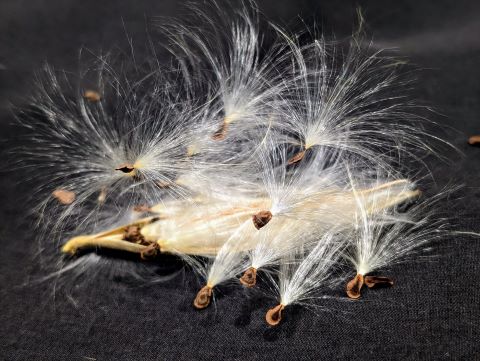Are Your Seeds Sleeping? Wake Them Up!
You might have read my article about seed collecting in the fall. If you followed the advice, you should have a plethora of labeled bags filled with seeds. Well, now is the time to get them started. Even with spring in the distant future, many plant species adapted to cold environments will need a dormancy-breaking treatment. 
Seed dormancy is when seeds are not metabolizing as they wait for favorable growing conditions. Dormancy-breaking treatments are needed to simulate the life cycle plants have adapted to in the wild. Many seeds in the Great Plains need a cold stratification, or cold treatment, period to imitate the outdoor winter conditions. Plants native to other warmer environments may need a warm stratification process. There are even species that need their seed boiled before starting cold stratification.
In nature, many of these seeds are a food source for wildlife. Birds eat the seeds and berries. Squirrels and other rodents, as well as deer, also eat berries, nuts, and fruit. However, this doesn’t stop the seed from germinating. Many of these plant species have adapted for their seeds to move through an animal's digestive tract. Whether abrasing the seed coat during chewing, or the digestive enzymes in their stomach softening the impermeable layer of the seed coat, these processes are actually required for successful germination. This is called seed scarification.
In a production setting, there isn’t a band of wildlife going up and down the isles eating and expelling seeds. At least there shouldn’t be. So, seed scarification is accomplished differently. For seeds with a hard seed coat, scraping them on 150-grit sandpaper scratches the seed coat enough to allow the seed to soak up or imbibe water. For success, some species need their seed coat cracked open with a hammer or nicked with a knife. Another scarification method would be to soak the seeds in a concentrated acid. This is very dangerous if you do not have experience handling volatile chemicals. A suitable alternative, such as vinegar, can be used, but with less success. Once the process is complete, immediately sow the seeds as they will not store long. The scarification process should take place before stratification.
The cold stratification process can be as little as a few days or as long as four months. Cold stratification can be accomplished by placing your seeds in a damp media and placing them in the refrigerator, cold garage, or even in a protected place outside. Media can be regular potting mix, vermiculite, perlite, even wet paper towels and coffee filters can be used. Containers can be regular growing pots, plastic rubber ware, or a cleaned milk jug cut in half. If you are using a paper towel or coffee filter, placing them in a sealable sandwich bag will suffice. Your cold area temperature needs to be between 33°F and 40°F. During this period, it is important that the media stays moist.
This might seem like a complicated process. Why not just cascade seeds at random in the desired area? On one hand, it is much easier, but there will be less germination. Without some sort of light cover, like straw, you are handing the birds an open buffet. If you do decide to go this route, use a heavy rake to scratch up the soil surface before laying seeds down. This ensures seed-to-soil contact.
It is important to look up the required dormancy-breaking treatment for your desired species. Many private companies have seed sowing guides that can be found online. If you have questions, you can always reach out to us at our Garden Hotline. Email garden.help@jocogov.org or call 913-715-7050.
by Markis Hill, Horticulture Ornamentals and Turf, 2024
Contact Us